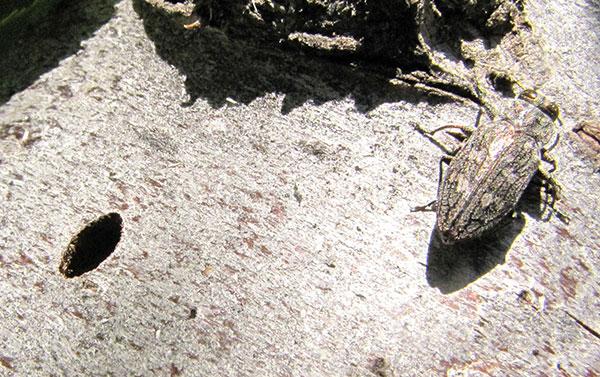
Don’t Let Flatheaded Borers Wreck Your Trees: What Utah Homeowners Need to Know
Don’t Let Flatheaded Borers Wreck Your Trees: What Utah Homeowners Need to Know
Flatheaded borers are small beetles, but the damage they cause can be big. These pests attack trees when they’re stressed or already weak, burrowing under the bark and slowly killing them from the inside out.
At Utah Tree Care Pros, we’ve seen firsthand how these sneaky insects can ruin fruit trees, shade trees, and even entire landscapes if left untreated. The good news? You can prevent it—with the right care and attention.
Here’s what you need to know to keep your trees safe and healthy.
What Are Flatheaded Borers?
Flatheaded borers are beetles that lay eggs on the bark of stressed or weakened trees—especially during the hot summer months. When the eggs hatch, the larvae burrow into the tree and start eating the tissue just under the bark (called the phloem). This interrupts the flow of nutrients and water, slowly choking the tree from within.
These pests are most active from late spring through summer, especially in dry areas or places where there are a lot of stacked firewood or untreated tree debris nearby.
Which Trees Are at Risk?
Flatheaded borers don’t go after healthy, strong trees. But they love trees that are stressed out—usually because of drought, heat, compacted soil, or damage.
Here are some of the trees they often target in Utah:
Apple trees (especially young ones
Peach, pear, and other fruit trees
Ash, maple, and other shade trees
Trees already hit by other pests or weather stress
How to Spot Flatheaded Borer Damage
Most people don’t even notice flatheaded borers until the damage is done. That’s why it’s important to know what to look for.
Signs of flatheaded borers include:
Small, oval-shaped holes in the bark (exit holes)
Loose or dead bark that easily peels off
Sawdust or frass (bug poop) collecting near the base
Branches dying back for no obvious reason
Cracks in bark where larvae tunneled
The most dangerous part? If the larvae girdle the trunk (chew all the way around the inside), the tree will likely die.
Why Prevention Is Better Than Treatment
Once borers are inside the tree, it's really hard to save it. Preventing the damage is way cheaper—and way more effective—than dealing with it after the fact.
At Utah Tree Care Pros, we focus on:
Keeping trees healthy and strong so pests don’t target them in the first place
Using soil care and root health strategies to reduce drought stress and improve nutrition
Monitoring during peak months (May–August) to catch issues early
Applying targeted pest control solutions when needed to stop the larvae before they spread
Our Approach to Tree Health in Utah
We don’t just spray chemicals and hope for the best. At Utah Tree Care Pros, we offer services that make your trees stronger from the inside out:
Plant Health Care (PHC)
Our PHC programs are designed to give your trees exactly what they need: the right nutrients, pest control, and regular checkups to prevent problems before they start.
Deep Root Fertilization
Trees in urban areas often lack the natural nutrients they’d get in the wild. We inject custom fertilizer deep into the root zone to help your trees grow stronger and resist pests like flatheaded borers.
Insect and Disease Control
Our certified arborists apply targeted, low-impact treatments when needed—only after assessing your tree’s condition. We don’t overspray or use blanket chemicals. Every treatment is customized and timed for maximum effectiveness.
When to Take Action
Flatheaded borers are most active from late May through July. That’s when adult beetles lay eggs on stressed trees. If you spot any warning signs—or if your tree has had past issues—it’s important to act quickly.
The best time to protect your trees is before the damage starts.
Why Utah Property Owners Choose Us
Homeowners, orchard managers, and business owners across Utah trust Utah Tree Care Pros because:
✔ We know how to spot problems early
✔ We use real science and certified arborists
✔ We focus on prevention, not just treatment
✔ We’re local—so we understand Utah’s weather, soil, and tree types
✔ We care about doing the job right the first time
Flatheaded Borers Might Be Small, But the Risk Is Real
If your tree is already showing symptoms—or if it’s been stressed by drought, storm damage, or other pests—flatheaded borers might be just around the corner. Don’t wait until the bark starts peeling and the leaves start dropping.
Healthy trees don’t attract borers. Sick trees do. With the right support, your trees can bounce back before these pests ever get a chance.
📞 Call Utah Tree Care Pros at (801) 870-0164
🌐 Visit utahTreeCare.com to schedule a property health visit